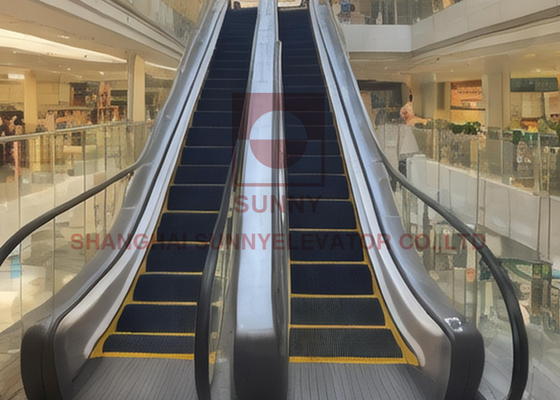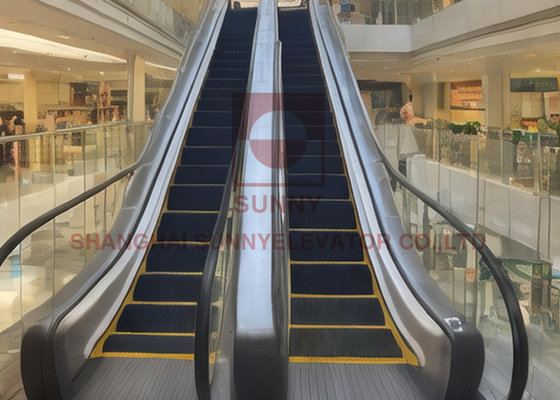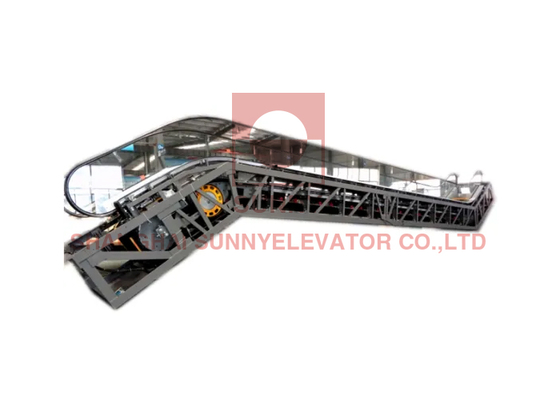MetroRise Transit Escalators - Heavy-Duty 24/7 Public Transport Solution
The Comprehensive Guide to Escalators: Design, Functionality, and Safety Standards
Escalators have become an indispensable part of modern urban infrastructure, seamlessly moving millions of people daily in shopping malls, airports, metro stations, and public buildings worldwide. This comprehensive guide explores the history, technical specifications, safety features, and future developments of these remarkable moving staircases.
Historical Evolution of Escalators
The concept of the escalator dates back to 1892 when Jesse Reno patented the first working model, initially called an "incline elevator." The first operational unit was installed at Coney Island's Old Iron Pier in New York City on January 16, 1893. This primitive version transported passengers on a conveyor belt at a 25-degree angle over just seven feet, yet carried an impressive 75,000 passengers during its two-week demonstration 3.
Charles Seeberger later improved the design with horizontal steps, handrails, and comb plates, collaborating with Otis Elevator Company to showcase the "Escalator" at the 1900 Paris Exposition, where it won first prize. The name "Escalator" combined the Latin word "scala" (steps) with "elevator," though it lost trademark status by 1950 10. The technology reached China in 1935 when Shanghai's Da Xin Department Store installed two Otis single-person escalators 10.
Technical Specifications and Design Parameters
Modern escalators are sophisticated electromechanical systems with precise engineering requirements. The International Standard ISO 9589:1994 EN establishes critical building dimensions for escalator installation, including length, width, height, and inclination angles 5. Key technical parameters include:
Standard Escalator Specifications Table
| Parameter |
Commercial/Public Range |
Notes |
| Speed |
0.5-0.75 m/s (100-150 ft/min) |
Higher speeds for public transport 6 |
| Inclination |
30° (common), 35° (space-saving) |
27.3° alternative for public spaces 6 |
| Step Width |
600/800/1000/1200 mm |
Wider for high-capacity areas 26 |
| Vertical Rise |
Up to 20m (standard), 40m (special) |
KONE's TransitMaster™ reaches 16m 2 |
| Capacity |
4,000-14,000 persons/hour |
Depends on speed and step width 10 |
| Power |
~100 HP (75 kW) typical |
Drives steps and handrails simultaneously 10 |
| Lifespan |
20-30 years |
With proper maintenance 3 |
Mechanical Components and Operation
An escalator's core mechanism involves two parallel chains looping around four sprocket assemblies, with steps attached to the chains through a series of rollers. The system comprises:
-
Step System: Metal steps with articulated designs that form stairs during ascent/descent and flatten at entry/exit points. Each step has two sets of wheels running on separate tracks 10.
-
Drive System: An electric motor (typically 100 HP) powers the main drive gear at the top, moving the chain loops. Gearless designs are becoming more common 10.
-
Handrails: Rubber belts moving synchronously with steps, powered by the same drive mechanism 10.
-
Truss: The structural framework supporting all components, usually steel construction 2.
-
Control Systems: Modern units feature microprocessor controls with safety sensors and remote monitoring capabilities 2.
The magic lies in the step's wheel configuration: front wheels connect to the drive chain while rear wheels follow along separate tracks. This arrangement maintains step horizontality throughout the journey, only flattening or folding at terminals 10.
Safety Innovations and Standards
Safety has dramatically evolved since early escalators. ISO/TS 8103-6:2017 establishes global safety parameters (GESRs) covering structural integrity, electrical systems, mechanical reliability, fire protection, and human-machine interfaces 7. Key safety features include:
-
Anti-reverse protection: Prevents dangerous backward movement during power loss 4
-
Overspeed governors: Monitor and control step speed 4
-
Combplate safety devices: Detect obstructions at entry/exit points
-
Emergency stop buttons: Strategically placed along balustrades
-
Skirt brushes: Prevent clothing or body parts from getting trapped 6




FAQ
1. Are the elevator wire ropes durable?
The elevator wire rope has special provisions and requirements. Configuration is not only for wire rope and rated load, but also considered the size of the traction, as a result, the tensile strength of wire rope is greater than the weight of the lift. The safety factor is equipped with more than four wire rope. So it won’t break at the same time.
2. Is it dangerous for power failure suddenly during the elevator running?
If it occurs, the elevator will automatically stop due to the electrical and mechanical safety device. In case of power failure,elevator brakes will automatically taken. In addition, the power supply departments such as planned outage, prior notice are also operating.
3. Will us be hurt when it closed suddenly?
In the closing process, if people touch the hall door, the door of elevator will automatically restart without any danger. With anti clamping switch, once the gate touched, this switching action make the elevator unable to be closed and even reopened. In addition, closing force is also available here.
4. How the elevator running?
Elevators are operated with a counterweight wire rope through the (tractor) traction drive, making ups and downs on the guide rail.
5. Is the escalator installation complicated?
We believe the functions of an escalator are not necessarily proportional to the operation complexity. Therefore, escalators designed by us apply an integrated structure, so that the equipment is more precise and more efficient and allows easier and more convenient commissioning.
6. Do you have any cerifications?
Yes, we do with ISO9001 / CCC / CE Certificates for u.

 Your message must be between 20-3,000 characters!
Your message must be between 20-3,000 characters! Please check your E-mail!
Please check your E-mail!  Your message must be between 20-3,000 characters!
Your message must be between 20-3,000 characters! Please check your E-mail!
Please check your E-mail! 





